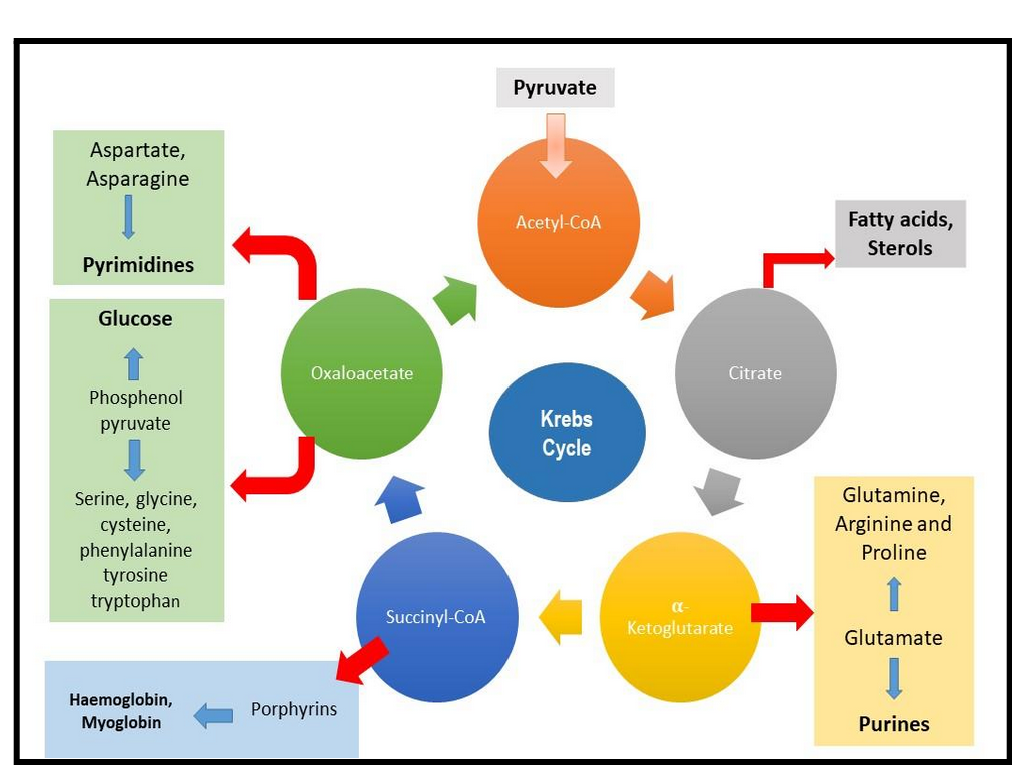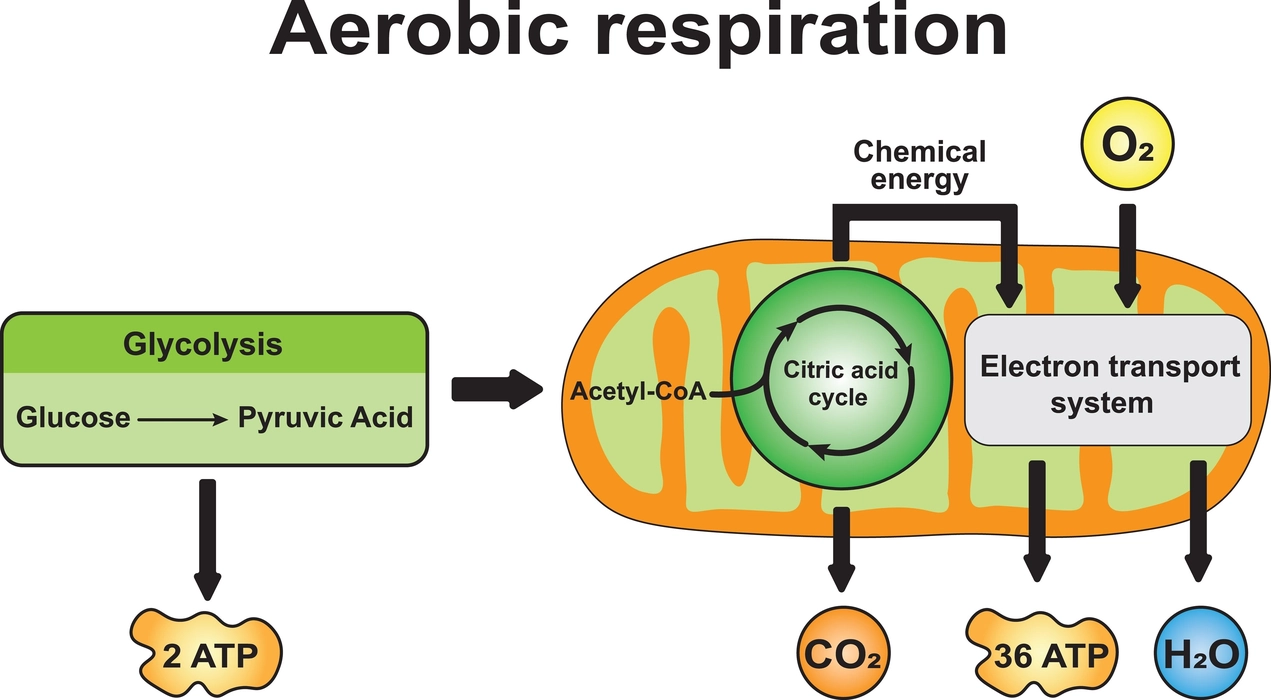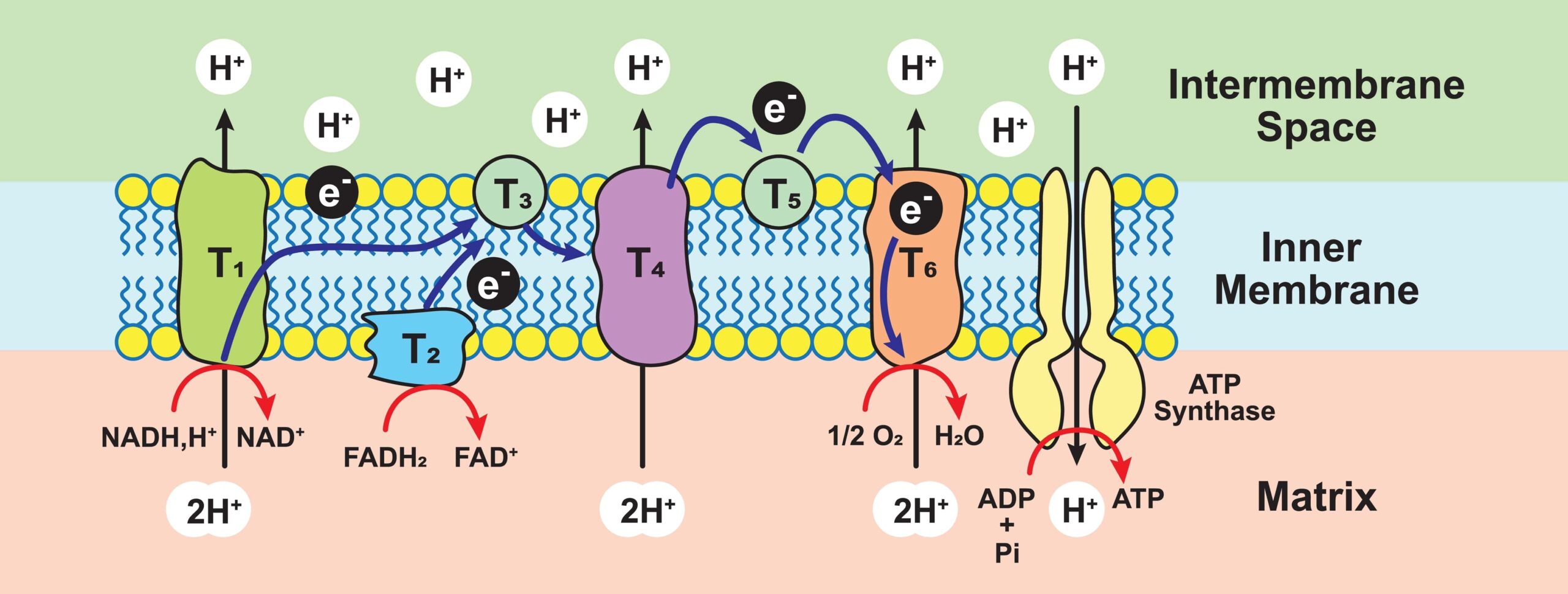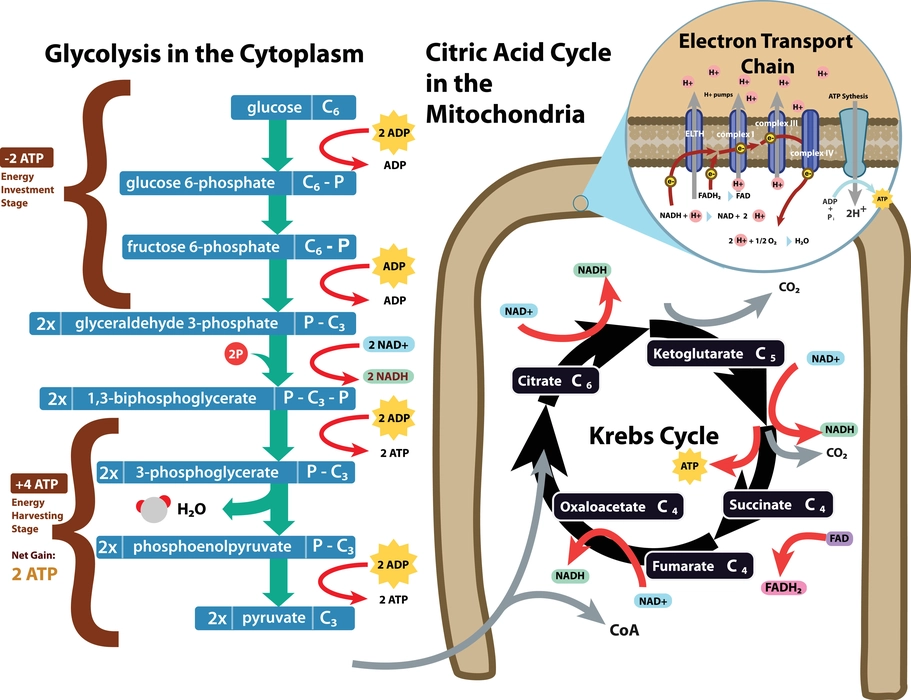Introduction
A metabolic pathway consists of a series of chemical reactions in which a certain molecule is transformed from one product to another. Enzymes catalyze each step in a metabolic pathway. The anabolic pathway involves biosynthesis, or the creation of new molecules, and is a constructive mechanism. On the other hand, the catabolic pathway is a degradative process that causes compounds to break down. An energy input would be necessary for both of these kinds of pathways. An amphibolic pathway is a type of biological process that involves both anabolism and catabolism. In these pathways, the catabolic end products or intermediates are utilized in anabolic pathways as precursors and provide free energy for the production of further molecules.
Glycolysis -an amphibolic pathway
In the metabolism of plants, animals, and numerous microbes, glucose plays a crucial role. It is employed to carry out aerobic or anaerobic respiration, which produces energy in the form of ATP. Through a sequence of processes, glucose is converted to two molecules of pyruvate during glycolysis. Although it is primarily understood as a catabolic process, some of the pathway’s intermediates are also used in the production of a few different biomolecules. Hence glycolysis is an amphibolic pathway.
The following shows how glycolysis is an amphibolic pathway-
- The pentose phosphate pathway uses glucose 6-phosphate, to produce ribose 5-phosphate, which is then employed in the synthesis of nucleic acids.
- The process that produces glyceraldehyde 3-phosphate also produces glycerol, which is necessary for the synthesis of phospholipids.
- Pyruvate, the final byproduct of the glycolytic process, is further converted to Acetyl-CoA, which is utilized in the production of fatty acids.
- The NADPH generated in the pentose phosphate pathway, which utilizes glycolysis intermediates, is employed as a reducing agent to enable a number of anabolic processes, such as the production of fatty acids, nucleic acids, carotenoids, etc.

Krebs cycle -an amphibolic pathway
In aerobic organisms, the Krebs Cycle (also known as the TCA cycle) is amphibolic because it participates in both catabolic and anabolic processes. The Krebs Cycle, which takes place in the mitochondria, results in the production of ATP, NADPH, and FADH2.
The Krebs Cycle’s key component, acetyl-CoA, is produced from-Pyruvate oxidation (from glycolysis), Fatty Acids (Beta-oxidation), and Amino acid degradation.
- Krebs Cycle is catabolic because it completely oxidized acetyl-CoA into carbon dioxide (CO2).
- The Krebs cycle is also referred to as being anabolic since various biomolecules, such as nucleic acids, fatty acids, amino acids, and porphyrins, are synthesized from its intermediates.
- At each cycle turn, the Krebs cycle intermediate oxaloacetate is created again in order to condense with a new molecule of acetyl-CoA which continues the cycle.
Other intermediates of the Krebs Cycle serve the following anabolic functions-
- Porphyrins, which are necessary for the synthesis of myoglobin and hemoglobin, are created using succinyl-CoA.
- Oxaloacetate is the starting material for synthesizing amino acids such as proline, alanine, glutamate, and aspartate. Purines are created by using glutamate and aspartate amino acids.
- In the mitochondria, oxaloacetate is also transformed into phosphoenolpyruvate, which is then transformed into glucose via the gluconeogenesis pathway. Malate is also employed for gluconeogenesis.
- ɑ-Ketoglutarate is a component in succinate synthesis.
- By way of transamination processes,ɑ- ketoglutarate is also utilized in the synthesis of glutamate and pyruvate.
- Acetyl-CoA, the precursor for the production of fatty acids and cholesterol, is formed when citrate and CO2 interact.
- The fatty acids are further metabolized into triacylglycerols and diacylglycerols and ultimately form the phospholipids.
- The cholesterol formed is then used to synthesize steroids and bile acids.

How is the Respiratory Pathway an Amphibolic Pathway?
- Complex molecules are converted into simpler ones during respiration, which gives organisms energy in the form of ATP.
- The four steps of respiration are glycolysis, pyruvate oxidation, the tricarboxylic acid cycle, and oxidative phosphorylation.
- These include the tricarboxylic acid cycle(TCA) and glycolysis, which both generate intermediates used in the creation of numerous other biomolecules.
- The pentose phosphate pathway uses glucose 6-phosphate, the first glycolysis intermediate, to branch off from glycolysis.
- The formation of ribose 5-phosphate, which is produced through the pentose phosphate pathway, is crucial for the biosynthesis of nucleotides.
- Erythrose 4-phosphate, which is necessary for the synthesis of aromatic amino acids like tryptophan, phenylalanine, and tyrosine, is also produced by the pentose phosphate pathway.
- As a result, it may be said that the respiratory system is an amphibolic pathway since it produces a number of precursor metabolites that are used in the biosynthesis of several cellular components. It also involves the oxidation of organic carbon into carbon dioxide and water, which releases energy.
Summary
- Amphibolic pathways are both catabolic and anabolic.
- Glycolysis intermediates, glucose 6-phosphate, and glyceraldehyde 3-phosphate are used to produce purines and phospholipids, respectively.
- Krebs Cycle is a well-known amphibolic process, and its intermediates are employed in the synthesis of different amino acids, fatty acids, sterols, nucleic acids, etc.
- The respiratory pathway is referred to as amphibolic since it contains a variety of catabolic intermediates that act as anabolic precursors.
Frequently Asked Questions
1. Difference between Krebs cycle and Glycolysis
Ans:
| Glycolysis | Krebs Cycle |
| Occurs in the cytoplasm | Occurs in the mitochondrial matrix |
| It marks beginning of respiration | It is the 3rd step in respiration. |
| It is a linear pathway | It is a cyclic pathway |
| Glucose converted to 2 molecules of pyruvate. | Acetyl-CoA is converted into carbon dioxide. |
| No release of CO2 | CO2 released |
| Net ATP generated = 8 ATP | Net ATP generated = 24 |
2. What are two forms of glycolysis?
Ans: The two forms of glycolysis are Aerobic and anaerobic glycolysis-
- Pyruvate enters the citric acid cycle under aerobic conditions and proceeds through oxidative phosphorylation, which results in the net synthesis of 32 ATP molecules.
- Pyruvate is converted to lactate under anaerobic conditions by the process of anaerobic glycolysis.
3. Who gave the term Amphibolic Pathway?
Ans: In 1961, B. Davis gave the term amphibolic Pathway. It is a pathway that involves both anabolism and catabolism.






